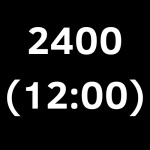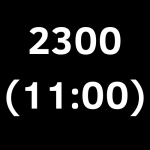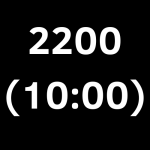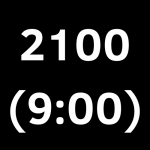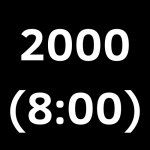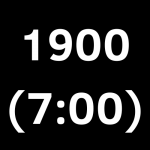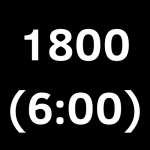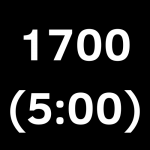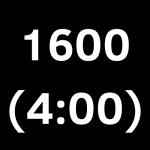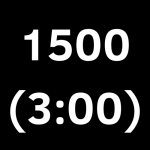Military Alphabet - The Ultimate Guide to NATO Phonetic Alphabet
What is the Military Phonetic Alphabet?
The Military Phonetic Alphabet is a system of phonetic notation designed to overcome the challenges of transmitting and understanding verbal information over radio or phone communications. It uses a set of words, each representing a letter of the English alphabet, to ensure clarity and minimize errors or confusion in communication.
Importance of the Military Phonetic Alphabet for Professionals
In the professional world, effective communication is crucial, and the Military Alphabet plays a vital role in achieving this. Here are a few reasons why professionals should familiarize themselves with this alphabet:
1. Precise Verbal Communication
In high-pressure situations, such as military operations or aviation, clear and precise communication is essential. The Military Alphabet allows professionals to convey information accurately, even in challenging environments or when using low-quality communication devices.
2. International Standardization
The Military Phonetic Alphabet has gained international recognition and is widely used across various fields. By familiarizing yourself with this alphabet, you ensure compatibility and effective communication with professionals from different backgrounds, both domestically and internationally.
3. Improved Message Clarity
Using the NATO Military Alphabets reduces the likelihood of misunderstandings, misinterpretations, and errors in message transmission. As a professional, this alphabet enhances your ability to convey information clearly, ensuring your messages are understood without ambiguity.
Military Alphabet Chart
The chart below displays each character of the alphabet with its corresponding code word, pronunciation, and morse code.
Military NATO Phonetic Alphabets:
Alpha, Bravo, Charlie, Delta, Echo, Foxtrot, Golf, Hotel, India, Juliett, Kilo, Lima, Mike, November, Oscar, Papa, Quebec, Romeo, Sierra, Tango, Uniform, Victor, Whiskey, X-ray, Yankee, Zulu.
| Character | Alphabet | Pronunciation | Morse Code |
|---|---|---|---|
| A | Alpha | Al · fah | *- |
| B | Bravo | Brah · voh | -*** |
| C | Charlie | Char · lee | -*-* |
| D | Delta | Dell tah | -** |
| E | Echo | Eck · oh | * |
| F | Foxtrot | Foks · trot | **-* |
| G | Golf | Golf | –* |
| H | Hotel | Hoh · tell | **** |
| I | India | In · dee · ah | ** |
| J | Juliet | Jew · lee · ett | *— |
| K | Kilo | Key · loh | -*- |
| L | Lima | Lee · mah | *-** |
| M | Mike | Mike | — |
| N | November | No · vem · ber | -* |
| O | Oscar | Oss · ker | — |
| P | Papa | Pah · pah | *–* |
| Q | Quebec | Kweh · beck | –*- |
| R | Romeo | Row · me · oh | *-* |
| S | Sierra | See air rah | *** |
| T | Tango | Tang · go | – |
| U | Uniform | You · nee · form | **- |
| V | Victor | Vik · tore | ***- |
| W | Whiskey | Wiss · key | *– |
| X | X-Ray | Ecks · ray | -**- |
| Y | Yankee | Yang · key | -*– |
| Z | Zulu | Zoo · loo | –** |
Cracking the Code: Unveiling the Secrets of Military Slang and Phonetic Alphabet Code Words
Within the military, effective communication is of utmost importance. Military slang and NATO code words serve as essential tools for clear and efficient communication in various situations. Here’s why they matter:
1. Efficient and Precise Communication
In the high-pressure environments of military operations, every second counts. Military slang and code words allow for faster and more accurate communication, enabling soldiers to relay critical information quickly and efficiently.
2. Building Unity and Camaraderie
The use of military slang and code words creates a unique sense of solidarity and camaraderie among service personnel. Understanding and utilizing these specialized terms fosters a strong bond among individuals and helps establish a shared identity within the military community.
Understanding and using the following military codes and military slang words can lead to engaging discussions with members of the armed forces, veterans, and enthusiasts of morse code. It offers a common language, enabling meaningful communication with those involved in state departments, veterans affairs, and others interested in military history and communication systems
| Code Slang | Meaning |
|---|---|
| 11 Bravo | Army Infantry |
| Bravo Zulu | Good Job |
| Charlie Mike | Continue Mission |
| Charlie Foxtrot | Chaotic and Unorganized |
| Echo Tango Sierra | Expiration Term of Service (Date Tour of Duty Complete) |
| Lima Charlie | Loud and Clear |
| Mikes | Minutes |
| November Golf | No Good |
| Oscar Mike | On The Move |
| Tango Mike | Thanks Much |
| Tango Yankee | Thank You |
| Whiskey Charlie | Water Closet (Bathroom) |
| Whiskey Pete | White Phosphorous |
Military Numbers and Pronunciation
A military number is not just a random sequence of digits; it represents a soldier’s identity, their commitment to duty, and their place in the military hierarchy. It serves as a unique identifier, ensuring that each individual is recognized and accounted for, even in the midst of chaotic situations. This level of organization is crucial for effective command and control, enabling leaders to quickly assess the strength and composition of their units.
Moreover, military numbers foster a sense of unity and cohesion within the armed forces. They create a common language, allowing soldiers from different backgrounds to come together under a shared code. Whether it’s calling out a number during roll call or using it as a radio call sign, these numbers become a part of a soldier’s identity and instill a sense of belonging.
The Need for NATO Alphabet
In today’s fast-paced world, clear and effective communication is more important than ever. Whether it’s in the military, aviation, emergency services, or even everyday life, conveying information accurately and efficiently can make all the difference. That’s where the NATO Alphabet comes into play. This internationally recognized phonetic alphabet serves as a vital tool in ensuring that messages are understood clearly, even in challenging circumstances.
The NATO Alphabet, also known as the International Radiotelephony Spelling Alphabet, was developed by the North Atlantic Treaty Organization (NATO) to overcome the limitations of traditional spelling during radio transmissions. It replaces each letter of the alphabet with a specific word that is easily distinguishable and unlikely to be confused with others. For example, instead of saying “B” for “Boy,” using the NATO Alphabet, we say “Bravo.” This eliminates any potential ambiguity and greatly enhances communication accuracy.
Why is the NATO Alphabet so important?
Well, imagine a scenario where a pilot needs to radio in their aircraft’s identification number amidst loud engine noise and radio interference. The traditional alphabet may cause confusion, as some letters can sound similar, like “B” and “D.” However, by employing the NATO Alphabet, the pilot can confidently say “Delta” instead of “D,” ensuring the message is received accurately and without any room for misinterpretation.
Learning the Military NATO Phonetic Alphabet
Now, let’s dive into the process of learning the NATO Military Alphabet. Here’s a step-by-step guide to help you grasp and memorize the alphabet quickly:
 Step 1: Understand the NATO Phonetic Words
Step 1: Understand the NATO Phonetic Words
Each letter of the English alphabet is represented by a unique word in the Military Phonetic Alphabet. Spend time familiarizing yourself with these words and their associated letters. Practice saying them out loud to reinforce your memory.
Step 2: Practice Spelling Words
Once you’re familiar with the phonetic words, start practicing spelling out common words using the NATO Phonetic Alphabet. This exercise will help you strengthen your understanding of the alphabet and improve your spelling accuracy when using it.
Step 3: Utilize Mnemonic Techniques
To aid memorization, consider using mnemonic techniques that associate the phonetic words with their corresponding letters. For example, you can create mental images or stories involving the phonetic word and its associated letter.
Step 4: Engage in Practical Scenarios
Put your knowledge to the test by engaging in practical scenarios that require the use of the Military Phonetic Alphabet. This can involve simulated communications, phone conversations, or real-life situations where precision and clarity are essential.
Decoding Military Slang
Military slang encompasses a range of language peculiarities used within the armed forces. Here are some examples and categories:
1. Abbreviations and Acronyms
The military employs a plethora of abbreviations and acronyms to convey complex concepts in a concise manner. Familiarizing oneself with military abbreviations is essential for comprehending and participating in military discussions.
2. Rank and Position Terminology
Each military branch has its specific ranks and positions, each with its own unique terminology. Understanding these designations enables individuals to navigate and comprehend the military hierarchy better.
The Role of Alphabet Code Words
Apart from slang, the military also utilizes alphabet code words, assigning specific words to each letter to enhance communication effectiveness. Here’s why they are significant:
1. Ensuring Security and Confidentiality
Code words are employed to safeguard sensitive information during communication. By replacing regular alphabet letters with code words, the military can maintain confidentiality and prevent unauthorized access to critical information.
2. Enhancing Clarity and Precision
In challenging and high-stress situations, communication clarity is pivotal. Alphabet code words minimize confusion and ensure messages are transmitted accurately, allowing for precise understanding among military personnel.
Military Time Chart and Military Time Converter
A Military Time Chart can be a useful visual to learn how the hours correspond between the two time systems. A Military Time Converter can also instantly convert between normal and military time for you to double check your conversions.
Conclusion
The NATO Phonetic Alphabets, NATO Military Code words, and Military slangs and words all play integral roles in the world of military communication. They ensure accurate transmission of information, protect sensitive data, and foster a sense of belonging within the armed forces. By embracing these linguistic tools, we honor the traditions and professionalism of military communication, allowing us to navigate the complexities of the battlefield with clarity and precision. So, whether you’re an aspiring soldier or simply intrigued by the fascinating world of military language, may you always appreciate the importance and power these linguistic tools hold.
